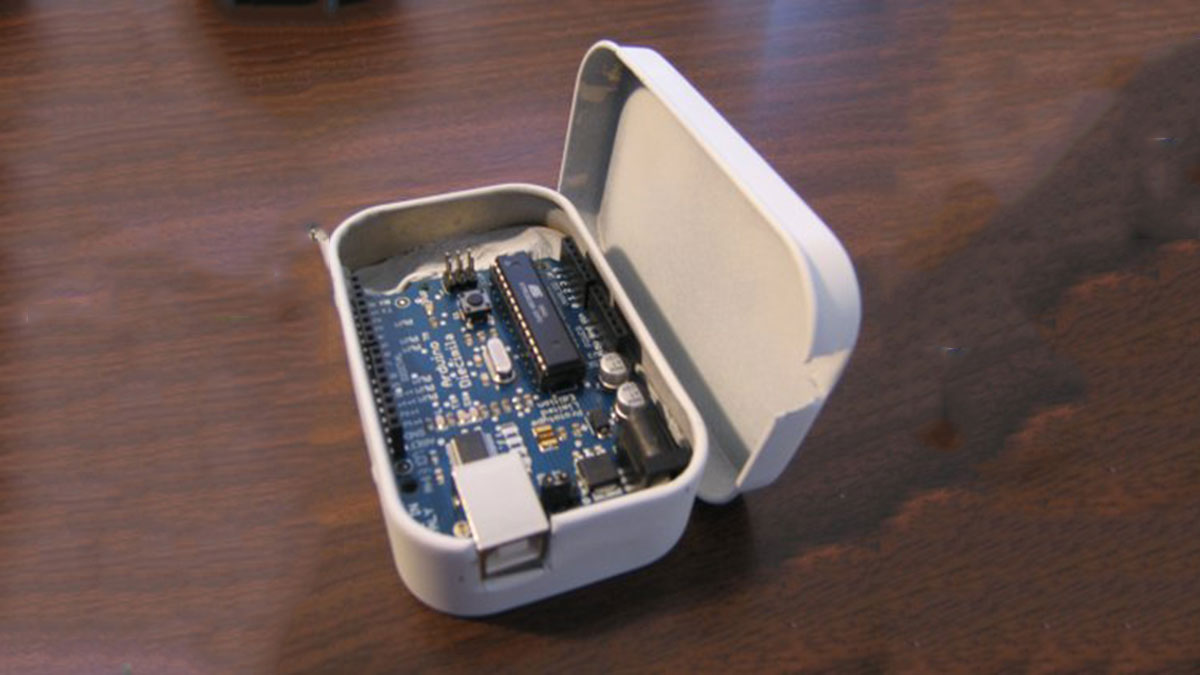You can get soup in a can. You can get bread in a can (*). Now the long wait is over! You can finally get Lambda Calculus in a can.
Project LambdaCan is an amusing exercise in absurdity. It implements a reducer (interpreter) for the Lambda Calculus, a formal system (programming language) developed by Alonzo Church in the 1930’s to attack the deepest mathematical problem of the day. This was the Entscheidungsproblem, the question of whether or not there exists an algorithm capable of deciding the truth or falsehood of all statements in mathematics.
Project LambdaCan takes this tool for exploring the most profound mathematical problems and implements it on a microcontroller better suited to the most mundane of tasks, like running a vending machine or microwave oven. And it sticks the microcontroller in a can that you can connect to your PC using a USB cable.

Of course, the extreme overhead involved in supporting the painfully abstract Lambda Calculus notation makes LambdaCan struggle to compute arithmetic as simple as 11 + 12 = 23. The microcontroller would perform much better if programmed in its native language. Furthermore, the very idea of plugging a LambdaCan coprocessor into a typical PC to perform computations is absurd since the PC could undoubtedly handle much larger computations faster on its own.
But… hey, it’s Lambda Calculus in a can!
Build your own LambdaCan
LambdaCan is essentially an Arduino Diecimila board mounted in a cough drop can using epoxy putty. The Diecimila board uses an Atmel ATmega168 microcontroller with 16KB of flash RAM and 1KB of SRAM. It is a favorite of the microcontroller hacking community with plenty of Free software support available online. Here are the steps:
- Download the LambdaCan software here. Follow the instructions in the tarball to build it and upload it to the Diecimila board.
- Cut a hole in the can for the Diecimila’s USB connector to poke through.
- Put the Diecimila board in a small plastic bag. Cover the bottom edges of the can with epoxy putty. While the putty is still soft, mash the plastic-wrapped Diecimila board into it until the board is in position with its USB connector poking out of the hole in the can. The plastic bag will keep the sticky epoxy off of your board. Remove the board and let the epoxy putty harden. Discard the plastic bag.
- Spraypaint the can. Let it dry.
- Put the Diecimila board into the can. The hardened expoy putty should ensure that it remains in the proper position. Close can. Done!
FYI:
- You can open the can if you need to hit the board’s reset button.
- Since we used the epoxy putty only to harden into a shape to accept the board and not to glue the board in place, if you want you can remove the board and use it for something else later.
Using LambdaCan
To use LambdaCan, boot your favorite GNU/Linux machine and then plug LambdaCan in to a free USB port. Run
screen /dev/ttyUSB0 9600
in a shell to interact with LambdaCan. Alternately, the instructions included with the source can tell you how to build a POSIX version of the software that you can run in a shell without needing the LambdaCan hardware.
The syntax of the Lambda Calculus is very simple: it has variables like x and functions like (\x.x). This function, for example, takes one argument x and returns the value of that argument—it’s the identity function. In Church’s original syntax, the \ would be a lambda. The period is a little syntactic sugar to make the function more readable by visually separating parameters from body. The Lambda Calculus also includes applications of functions. For example, ((\x.x) A) applies the above identity function to the argument A. Reducing expressions, at least in the simplest cases, amounts to syntactically substituting arguments for formal parameters in function bodies, like so:
For more detail: Lambda Calculus in a Can using Arduino
